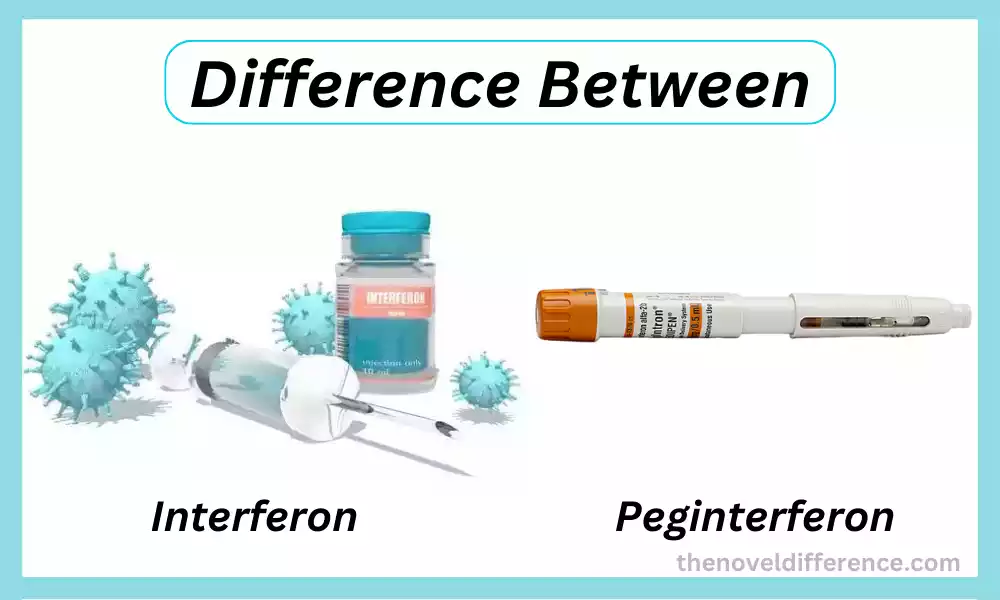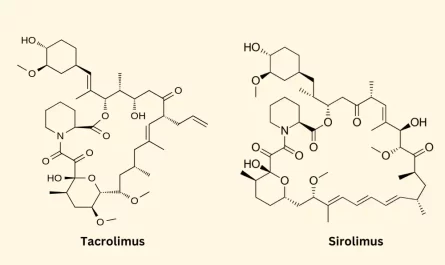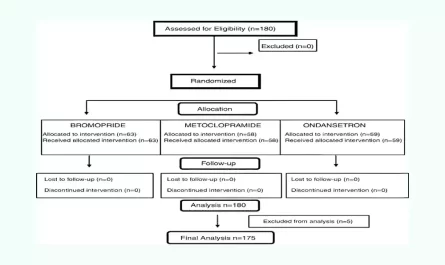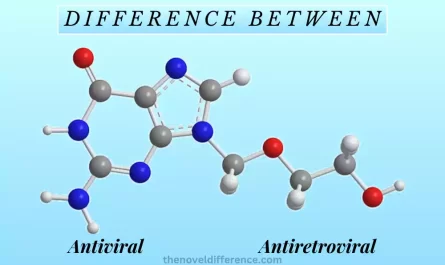Definition and background of Interferon and Peginterferon
Definition and background of interferon:
Interferons are proteins produced by cells of the immune system in response to viral infections, tumors or any other immune challenges.
Antibodies play an essential role in modulating immune reactions and possess potency antiviral and antitumor properties. Interferons are an essential part of the body’s defense mechanism against pathogens and abnormal cell growth.
Background of Interferon:
Discovery: Interferons were first discovered in the 1950s by researchers studying viral infections. They observed that when cells were infected with a virus, they released a substance that could protect neighboring cells from viral infection. This substance was later identified as interferon.
Types of Interferon: Interferons fall into three broad classes, alpha, beta and gamma. Each type has distinct functions and is produced by different cell types in the body.
Interferon-alpha (IFN-alpha): IFN-alpha is primarily produced by immune cells called leukocytes, particularly plasmacytoid dendritic cells and macrophages. It is involved in the antiviral response and helps regulate the immune system’s activity.
Interferon-beta (IFN-beta): IFN-beta can be produced by various cells such as fibroblasts and immune cells, acting to both manage inflammation and boost immunity. IFN-beta is commonly used as a treatment for multiple sclerosis.
Interferon-gamma (IFN-gamma): IFN-gamma is primarily produced by immune cells known as T lymphocytes and natural killer cells. It is involved in activating immune cells, enhancing antigen presentation, and promoting the destruction of infected or cancerous cells.
Mechanism of Action: Interferons exert their effects through a complex signaling pathway. When a cell detects the presence of a virus or other immune stimuli, it produces and releases interferons. Interferons target specific receptors on neighboring cells to initiate intracellular signaling events that result in cascading intracellular responses. This signaling leads to the activation of various antiviral proteins and immune responses, inhibiting viral replication and promoting the destruction of infected cells.
Medical Applications: Interferons have diverse medical applications due to their antiviral, antitumor, and immunomodulatory properties. Drugs prescribed under this class of therapy are utilized for treating various medical issues, from viral infections like Hepatitis B or C to certain cancers (melanoma or leukemia) as well as autoimmune disorders.
Interferons are a crucial component of the immune system’s response to pathogens and abnormal cell growth. Their discovery has opened the way for new therapies against viral infections, cancer and autoimmune disorders.
Understanding the different types of interferons and their functions is essential for exploring their therapeutic potential and optimizing treatment strategies.
Definition and background of peginterferon:
Introduction:
Peginterferon (pegylated interferon) is an altered form of interferon that has been chemically modified by attaching polyethylene glycol (PEG) molecules onto its structure.
This modification extends the half-life of interferon in the body, allowing for less frequent dosing and improved therapeutic effects. Peginterferon is used in the treatment of chronic viral infections, such as hepatitis B and hepatitis C.
Background of Peginterferon:
Development: Peginterferon was developed as a result of advancements in protein engineering and modification techniques. By attaching PEG molecules to interferon, researchers aimed to increase its stability, reduce its clearance from the body, and enhance its therapeutic benefits.
Purpose: The primary purpose of pegylation is to improve the pharmacokinetic properties of interferon. The attachment of PEG molecules to interferon alters its molecular weight and structure, resulting in slower clearance from the bloodstream and a prolonged half-life compared to regular interferon.
Structure and Composition: Peginterferon is created by covalently attaching PEG molecules to interferon. The PEG molecules form a protective “shield” around the interferon protein, reducing its recognition by the immune system and prolonging its circulation in the body.
Mechanism of Action: The mechanism of action of peginterferon is similar to that of regular interferon. When administered, peginterferon binds to specific receptors on cells, triggering intracellular signaling pathways that lead to the activation of antiviral proteins and immune responses. This helps in suppressing viral replication and promoting the immune system’s ability to fight infections.
Medical Applications: Peginterferon is primarily used in the treatment of chronic viral infections, particularly chronic hepatitis B and hepatitis C. It is often used in combination with other antiviral medications to enhance treatment efficacy. Peginterferon therapy has shown effectiveness in reducing viral load, improving liver function, and increasing the rates of sustained virological response (SVR) in patients with chronic hepatitis B or C.
Administration and Dosage: Peginterferon is administered via subcutaneous injection. The frequency of administration varies depending on the specific indication and individual patient factors but is typically once weekly or once every two weeks. The dosage is determined by healthcare professionals based on factors such as the patient’s weight, viral genotype, and treatment response.
Advantages and Disadvantages: The main advantage of peginterferon over regular interferon is its prolonged half-life, which allows for less frequent dosing and increased patient convenience. Additionally, pegylation may improve tolerability and reduce certain side effects associated with interferon therapy. However, peginterferon can still have side effects, and its use may be limited by factors such as cost, availability, and patient-specific considerations.
Peginterferon is a modified form of interferon that has been chemically altered by attaching PEG molecules to improve its pharmacokinetic properties.
Primarily used to treat chronic viral infections like chronic hepatitis B and C infections. By prolonging the half-life of interferon, peginterferon offers advantages such as less frequent dosing and potentially improved treatment outcomes.
However, any use should be carefully considered with healthcare providers in consultation to take account of both individual patient factors as well as specifics about the condition being treated.
Importance of understanding the difference between interferon and peginterferon
Understanding the difference between interferon and peginterferon is crucial for several reasons:
Treatment Selection: Interferon and peginterferon therapy is an effective solution to various medical conditions, including viral infections and some forms of cancer. Understanding the differences between physical therapy and psychological therapies allows healthcare providers to make educated choices when selecting an effective solution for specific patients. Before selecting an effective therapy approach for any given situation, all pertinent factors including patient condition and disease severity as well as desired goals and potential side effects must be carefully evaluated and considered.
Pharmacokinetics: Interferon and peginterferon have different pharmacokinetic profiles due to the chemical modification of pegylation. Interferon has a relatively short half-life and requires more frequent dosing, whereas peginterferon has a prolonged half-life, allowing for less frequent administration. This difference has implications for treatment adherence, convenience, and potential side effects. Understanding these pharmacokinetic differences helps healthcare providers optimize dosing schedules and improve treatment outcomes.
Efficacy and Safety: Interferon and peginterferon may exhibit variations in efficacy and safety profiles.Some medical conditions respond better to one form of therapy than another. Comparative studies and clinical trials provide valuable data on the effectiveness of interferon and peginterferon in different patient populations. Understanding these differences helps healthcare providers make evidence-based decisions regarding treatment selection, monitoring, and management of potential side effects.
Side Effects and Tolerability: Interferon and peginterferon can both have side effects, but the specific nature and severity of these side effects may differ. For example, pegylation may reduce some of the flu-like symptoms associated with interferon therapy. By understanding the specific side effect profiles of interferon and peginterferon, healthcare providers can proactively manage side effects, educate patients about potential risks, and provide appropriate supportive care.
Cost and Availability: The availability and cost of interferon and peginterferon can vary depending on geographical location, healthcare systems, and insurance coverage. Understand the costs and access issues surrounding various treatments is of critical importance for healthcare providers and patients, as it impacts treatment decisions as well as overall patient care.
Future Developments: Research and advancements in the field of interferon-based therapies continue to evolve. Understanding the differences between interferon and peginterferon lays the foundation for staying updated with new developments and potential advancements in treatment options. This knowledge allows healthcare providers to adapt their treatment strategies and incorporate emerging therapies when appropriate.
Understanding the difference between interferon and peginterferon is crucial for healthcare providers to make informed treatment decisions, optimize dosing schedules, manage side effects, and ultimately improve patient outcomes. It enables personalized and evidence-based care for individuals with conditions that can benefit from interferon-based therapies.
Interferon
Interferon is a group of proteins that play a vital role in the immune system’s response to viral infections, tumors, and other immune challenges.
It is produced and released by cells in response to various stimuli, such as the presence of viruses, double-stranded RNA, or immune system signaling molecules.
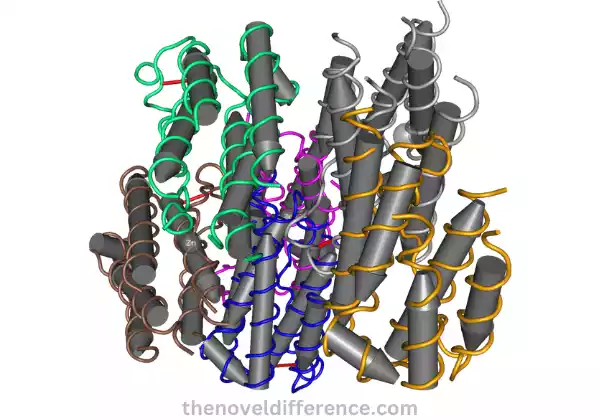
Here are some key points about interferon:
Interferon can be divided into different categories according to its different functions and the cells responsible for producing it. The main types include a.
Interferon-alpha (IFN-alpha): Produced primarily by leukocytes (white blood cells) and is involved in the immune response against viral infections. b.
Interferon-beta (IFN-beta): Produced by fibroblasts, epithelial cells, and immune cells. It helps regulate inflammation and immune responses. c.
Interferon-gamma (IFN-gamma): Produced by T lymphocytes and natural killer cells. It is crucial for activating immune cells and enhancing their ability to destroy infected or cancerous cells.
Mechanism of Action: When a cell detects the presence of a viral infection or other immune stimuli, it produces and releases interferons. Interferons bind to specific receptors on neighboring cells, triggering a cascade of intracellular signaling events. This signaling leads to the activation of various antiviral proteins and immune responses, inhibiting viral replication and promoting the destruction of infected cells.
Antiviral Activity: Interferons have potent antiviral properties. They interfere with viral replication by inducing the expression of antiviral proteins in infected cells, inhibiting viral protein synthesis, and activating immune cells that can directly kill virus-infected cells.
Anticancer Activity: Interferons also have antitumor effects. Effective cancer therapies may prevent cancer cell growth by blocking their ability to divide, supporting immunity system detection and destruction, and curbing angiogenesis (tumor growth involving new blood vessel formation).
Immunomodulatory Effects: Interferons have immunomodulatory properties, meaning they can regulate and modulate the immune response. Immune system molecules may help boost production and presentation for an anti-inflammatory and pro-inflammatory balance in response.
Medical Applications: Interferons have long been used as treatments for various medical conditions, from viral infections like Hepatitis B & C and Melanoma and Leukemia cancer types, as well as treating certain forms of autoimmunity such as Multiple Sclerosis. They are administered via injection and the specific dosage and treatment duration depend on the condition being treated.
Side Effects: Interferon therapy can have side effects, which can vary depending on the individual, dosage, and duration of treatment. Common side effects may include flu-like symptoms (fever, fatigue and muscle aches), as well as gastrointestinal disturbances, mood shifts or changes to blood cell counts.
Interferons are a critical component of the body’s immune response to viral infections and tumors. They have diverse medical applications and understanding their functions and therapeutic uses is
Types of interferon
Interferons are classified into three main types based on their specific functions and the cells that produce them. The three types of interferons are:
Interferon-alpha (IFN-alpha):
Production: IFN-alpha is produced mainly by leukocytes, specifically plasmacytoid dendritic cells, and macrophages.
Function: IFN-alpha is involved in the immune response against viral infections. It stimulates the production of antiviral proteins within cells, inhibiting viral replication. Immune cells like natural killer (NK) cells and T lymphocytes become activated to detect and destroy virus-infected cells, increasing immunity.
Medical Applications: IFN-alpha can be utilized in treating various viral infections, including Hepatitis B and C as well as some forms of cancer such as Hairy Cell Leukemia and Melanoma.
Interferon-beta (IFN-beta):
Production: IFN-beta is produced by different cell types, including fibroblasts, epithelial cells, and immune cells.
Function: IFN-beta has immunomodulatory effects and is involved in regulating inflammation and immune responses. It can help control the immune system’s activity and reduce the severity and frequency of relapses in autoimmune disorders like multiple sclerosis.
Medical Applications: IFN-beta is primarily used as a treatment for multiple sclerosis, as it can help reduce disease activity and slow down its progression.
Interferon-gamma (IFN-gamma):
Production: IFN-gamma is primarily produced by T lymphocytes and natural killer (NK) cells.
Function: IFN-gamma plays a crucial role in activating immune cells, enhancing antigen presentation, and promoting the destruction of infected or cancerous cells. It is involved in the adaptive immune response and regulates the balance between pro-inflammatory and anti-inflammatory immune reactions.
Medical Applications: IFN-gamma has been investigated for its therapeutic potential in conditions such as chronic granulomatous disease and osteopetrosis. It is also used in laboratory settings for immune system testing.
These different types of interferons have overlapping functions but may exhibit variations in their specific activities and target cell types. They play crucial roles in immune responses, antiviral activity, and regulating immune system functions in various physiological and pathological conditions.
Peginterferon
Peginterferon (sometimes referred to as pegylated interferon ) is an altered form of interferon produced chemically by adhering polyethylene glycol (PEG ) molecules onto its structural.
This modification extends the half-life of interferon in the body, allowing for less frequent dosing and improved therapeutic effects. Peginterferon is primarily used in the treatment of chronic viral infections, such as hepatitis B and hepatitis C.
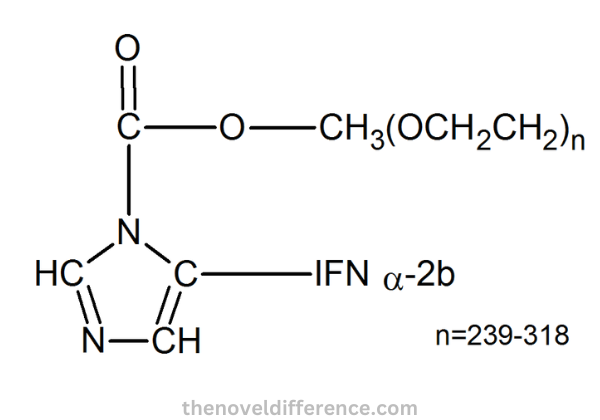
Here are some key points about peginterferon:
Purpose and Development: Peginterferon was developed to enhance the pharmacokinetic properties of interferon. By attaching PEG molecules to interferon, its molecular weight and structure are altered, resulting in slower clearance from the bloodstream and a prolonged half-life compared to regular interferon. This modification aims to improve treatment outcomes and patient convenience.
Administration: Peginterferon is administered via subcutaneous injection, usually once a week or once every two weeks. The specific dosage and frequency depend on the medical condition being treated and individual patient factors.
Treatment of Chronic Viral Infections: Peginterferon is commonly used in the treatment of chronic viral infections, particularly hepatitis B and hepatitis C. Ribavirin may also be combined with other antivirals for enhanced treatment efficacy. Peginterferon therapy aims to reduce viral load, improve liver function, and achieve sustained virological response (SVR), which is the absence of detectable virus in the blood for a certain duration after treatment.
Mechanism of Action: The mechanism of action of peginterferon is similar to regular interferon. Antivirals attach themselves to specific receptors on cells, activating intracellular signaling pathways that lead to antiviral protein activation and immune responses. This helps in suppressing viral replication and promoting the immune system’s ability to fight infections.
Efficacy and Side Effects: Peginterferon therapy has shown effectiveness in achieving a sustained virological response in a significant proportion of patients with chronic hepatitis B and hepatitis C infections. However, they can cause various side effects, including flu-like symptoms, fatigue and depression, hematological abnormalities as well as injection site reactions. The specific side effects and their severity can vary among individuals.
Considerations and Monitoring: Before initiating peginterferon therapy, healthcare providers assess various factors such as the patient’s medical history, viral genotype, liver function, and potential contraindications. During treatment, regular monitoring of viral load, liver function tests, and blood counts is necessary to evaluate treatment response and manage any side effects.
It is important to consult with a healthcare professional for comprehensive information and guidance regarding the use of peginterferon, as individual patient factors and specific medical conditions may influence treatment decisions and management strategies.
Development and purpose
Development and Purpose of Peginterferon:
Development: Peginterferon was developed as a result of advancements in protein engineering and modification techniques. The process of pegylation involves chemically attaching polyethylene glycol (PEG) molecules to interferon, resulting in a modified form known as peginterferon. The development of peginterferon aimed to improve the pharmacokinetic properties of interferon, such as its half-life, clearance rate, and therapeutic efficacy.
Purpose: The primary purpose of pegylation is to enhance the therapeutic benefits and convenience of interferon therapy. Here are the main purposes and advantages of peginterferon:
- Prolonged Half-Life: Regular interferon has a relatively short half-life in the body, requiring frequent dosing to maintain therapeutic levels. Pegylation of interferon extends its half-life, allowing for less frequent administration. This prolongation of the half-life reduces the frequency of injections, making the treatment more convenient for patients.
- Improved Pharmacokinetics: Peginterferon exhibits altered pharmacokinetic properties compared to regular interferon. The attachment of PEG molecules modifies the size, charge, and hydrophilicity of interferon, resulting in slower renal clearance and reduced immunogenicity. These modifications help peginterferon to circulate in the body for a longer duration, providing sustained therapeutic levels.
- Enhanced Efficacy: The extended half-life and sustained therapeutic levels of peginterferon contribute to its improved efficacy compared to regular interferon. By maintaining consistent concentrations of the medication in the body, peginterferon can exert a prolonged antiviral effect, leading to better treatment outcomes in chronic viral infections.
- Reduced Side Effects: Pegylation of interferon may help reduce certain side effects associated with interferon therapy. For example, flu-like symptoms, such as fever, chills, and fatigue, are commonly observed with regular interferon but may be less pronounced with peginterferon treatment. The modification of interferon through pegylation can potentially improve the tolerability and patient adherence to therapy.
- Combination Therapy: Peginterferon is often used in combination with other antiviral agents or treatment modalities for chronic viral infections. Combining peginterferon with other medications, such as ribavirin or direct-acting antivirals, can enhance treatment response rates and increase the likelihood of achieving sustained virological response.
The development of peginterferon aimed to optimize the therapeutic benefits of interferon therapy by improving its pharmacokinetic properties, reducing dosing frequency, enhancing patient convenience, and potentially reducing certain side effects.
These modifications make peginterferon an important treatment option for chronic viral infections like hepatitis B and hepatitis C. However, the use of peginterferon should be carefully considered based on individual patient factors, treatment goals, and the specific medical condition being treated.
Key Differences Between Interferon and Peginterferon
There are several key differences between interferon and peginterferon. These differences encompass their structure, pharmacokinetics, administration, and clinical applications. Here are the main distinctions:
Structure: Interferon refers to the naturally occurring proteins produced by cells in response to viral infections or immune stimulation. On the other hand, peginterferon is a modified form of interferon in which polyethylene glycol (PEG) molecules are attached to the interferon protein structure. This pegylation alters the properties of interferon, resulting in a longer half-life and modified pharmacokinetics.
Pharmacokinetics: Interferon has a relatively short half-life, typically ranging from a few hours to several hours, depending on the specific type. It requires frequent administration, often multiple times per week. In contrast, peginterferon has a prolonged half-life due to the pegylation process. This modification allows for less frequent dosing, usually once a week or once every two weeks.
Administration: Interferon is typically administered via subcutaneous injection, often requiring multiple injections per week due to its short half-life. Peginterferon is also administered via subcutaneous injection but with less frequency due to its extended half-life. This difference in dosing frequency enhances the convenience and adherence to treatment for patients receiving peginterferon.
Clinical Applications: Interferon has a wide range of clinical applications. Radioiodine therapy offers many medical and healthcare applications. From treating viral infections such as Hepatitis B and C to Hairy Cell Leukemia and Melanoma, its popularity among healthcare practitioners makes radioiodine one of the more sought-after therapies available today. Interferon therapy aims to stimulate the immune system’s antiviral response and suppress tumor growth. Peginterferon is primarily used in the treatment of chronic viral infections, particularly hepatitis B and hepatitis C. Its prolonged half-life allows for sustained antiviral effects and improved treatment outcomes compared to regular interferon.
Side Effects: Both interferon and peginterferon can cause side effects, although the specific side effect profiles may differ. Interferon and Peginterferon therapy may lead to flu-like symptoms, gastrointestinal upset and personality shifts. However, peginterferon therapy may be associated with a reduced incidence and severity of flu-like symptoms compared to interferon due to its extended half-life and modified structure.
Cost: Peginterferon tends to be more expensive than regular interferon due to the additional manufacturing steps required for pegylation. The cost of therapy may vary depending on the healthcare system, location, and insurance coverage.
Understanding these key differences between interferon and peginterferon is important for healthcare providers in selecting the appropriate treatment option, optimizing dosing schedules, managing side effects, and maximizing treatment efficacy for patients with viral infections or other conditions where interferon-based therapy is indicated.
What are the similarities between Interferon and Peginterferon?
Interferon and peginterferon share several similarities, primarily because peginterferon is a modified form of interferon.
Here are the main similarities between interferon and peginterferon:
Mechanism of Action: Interferon and peginterferon both exert similar therapeutic effects through similar mechanisms of action. Antivirals attach themselves to specific cell surface receptors and activate intracellular signaling pathways that result in antiviral protein expression and immune activation responses. This leads to the suppression of viral replication, enhanced immune cell activity, and modulation of the immune system’s response to infections or tumors.
Antiviral Activity: Both interferon and peginterferon possess potent antiviral properties. They inhibit viral replication by interfering with various stages of the viral life cycle and inducing the expression of antiviral proteins within infected cells. This helps to control and eliminate viral infections.
Clinical Applications: Interferon and peginterferon have overlapping clinical applications in the treatment of viral infections and certain types of cancer. Antivirals are used frequently in treating chronic viral infections like Hepatitis B and C. Combining both therapies can also be used to treat certain cancers, including melanoma or leukemia.
Administration: Both interferon and peginterferon are administered via subcutaneous injection. Although the dosing frequency differs between the two, the mode of administration remains the same.
Side Effects: Both interferon and peginterferon can cause similar side effects, although the severity and frequency may vary. Side effects may include flu-like symptoms like fatigue, muscle aches and fever. Other possible adverse reactions could be gastrointestinal disturbances and mood shifts. While peginterferon may be associated with reduced flu-like symptoms due to its extended half-life, both medications can still elicit side effects that require monitoring and management.
Immunomodulatory Effects: Both interferon and peginterferon have immunomodulatory properties. Influencing an immune response through enhanced antigen presentation, regulation of pro- and anti-inflammatory signals balance, or stimulating immune cell activity are three strategies used by healthcare practitioners to influence immunity. This immunomodulation plays a role in their therapeutic effects in various disease conditions.
While interferon and peginterferon have similarities, it’s important to note that the pegylation of interferon in peginterferon results in distinct pharmacokinetic properties and treatment advantages.
The modifications in peginterferon provide a longer half-life and reduced dosing frequency, improving patient convenience and potentially impacting side effect profiles.These factors should be kept in mind when selecting an effective treatment option for an individual and his or her medical condition.
Interferon vs Peginterferon in Tabular Form
Here is a tabular comparison between interferon and peginterferon:
| Aspect | Interferon | Peginterferon |
|---|---|---|
| Definition | Naturally occurring proteins produced by cells in response to viral infections or immune stimulation | Modified form of interferon with polyethylene glycol (PEG) molecules attached |
| Structure | Natural protein | Modified protein with PEG attachment |
| Pharmacokinetics | Short half-life, requiring frequent dosing | Prolonged half-life, less frequent dosing |
| Administration | Subcutaneous injection | Subcutaneous injection |
| Clinical Applications | Viral infections, certain cancers | Chronic viral infections (hepatitis B, hepatitis C) |
| Mechanism of Action | Induction of antiviral proteins, activation of immune responses | Induction of antiviral proteins, activation of immune responses |
| Antiviral Activity | Inhibits viral replication | Inhibits viral replication |
| Side Effects | Flu-like symptoms, gastrointestinal disturbances, mood changes, hematological abnormalities | Flu-like symptoms, gastrointestinal disturbances, mood changes, hematological abnormalities (potentially reduced severity) |
| Immunomodulatory Effects | Regulates immune response, stimulates immune cell activity | Regulates immune response, stimulates immune cell activity |
| Cost | Generally lower cost compared to peginterferon | Generally higher cost compared to interferon |
It’s important to note that while interferon and peginterferon have similarities, peginterferon offers certain advantages, such as prolonged half-life and reduced dosing frequency, which can improve convenience and potentially impact side effect profiles.
The specific choice between interferon and peginterferon depends on the medical condition being treated, treatment goals, individual patient factors, and cost considerations. Consulting a healthcare practitioner to determine the most suitable treatment option is vital to finding relief.
Conclusion
Interferon and peginterferon are widely-utilized therapeutic agents used for the treatment of viral infections and cancer. Interferon, is a naturally-occurring protein that stimulates immune function, while peginterferon is a modified version with polyethylene glycol molecules attached, offering increased half-life and enhanced pharmacokinetic properties.
Healthcare professionals need a firm grasp of the differences between interferon and peginterferon in order to select an ideal therapy option for patients. Interferon’s short half-life requires frequent dosing; on the other hand, peginterferon offers greater convenience with potentially reduced side effects; however, both drugs may produce flu-like symptoms, digestive disturbances, or hematological abnormalities.
Interferon and peginterferon exert their therapeutic effects by inducing antiviral proteins and immune responses that reduce viral replication while modulating your immune system, leading to its suppression and modulation. Their use has proven highly successful for chronic viral infections like Hepatitis B/C as well as certain cancerous types.

